In pictures: 70 years of Scottish hydro power
- Published
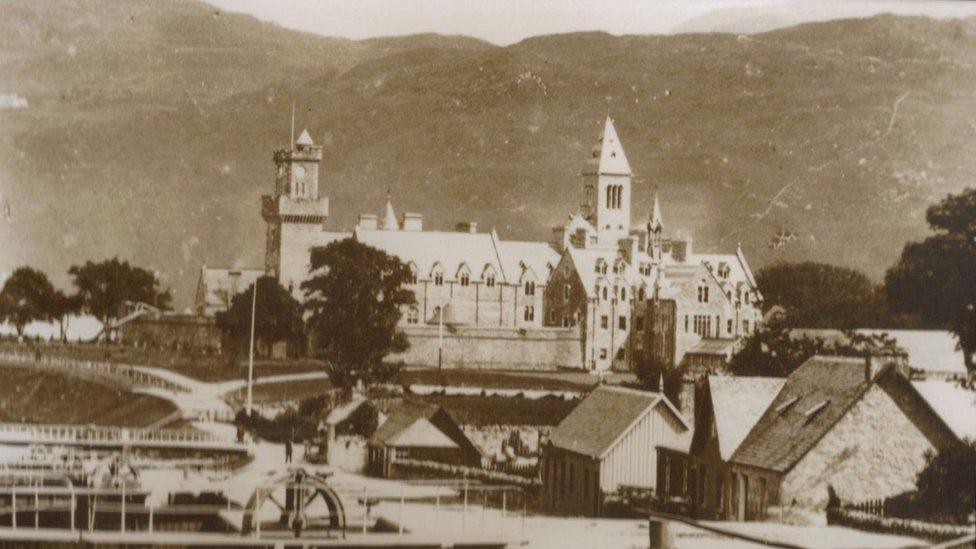
The 70th anniversary of the Hydro Electric Development (Scotland) Act of 1943, which kick started major hydro electric schemes across Scotland, is on 8 May. It is being marked with a renewable energy conference in Perth, and an exhibition exploring the history of hydro power. Fort Augustus abbey, built in 1891, was the home of the first ever public hydro-electric supply in Scotland. Legend has it that when the monks played their electric organ, the lights in the village went dim
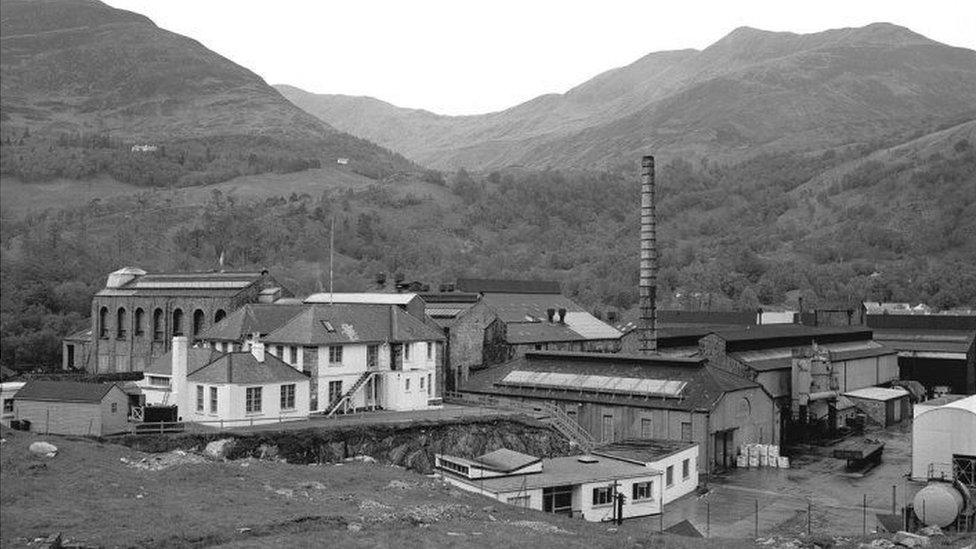
It took the burgeoning aluminium industry, driven by the need for a large source of cheap electricity, to make large-scale hydro-electric power a reality. This work led to creation of schemes such as this one at Kinlochleven, built in 1907
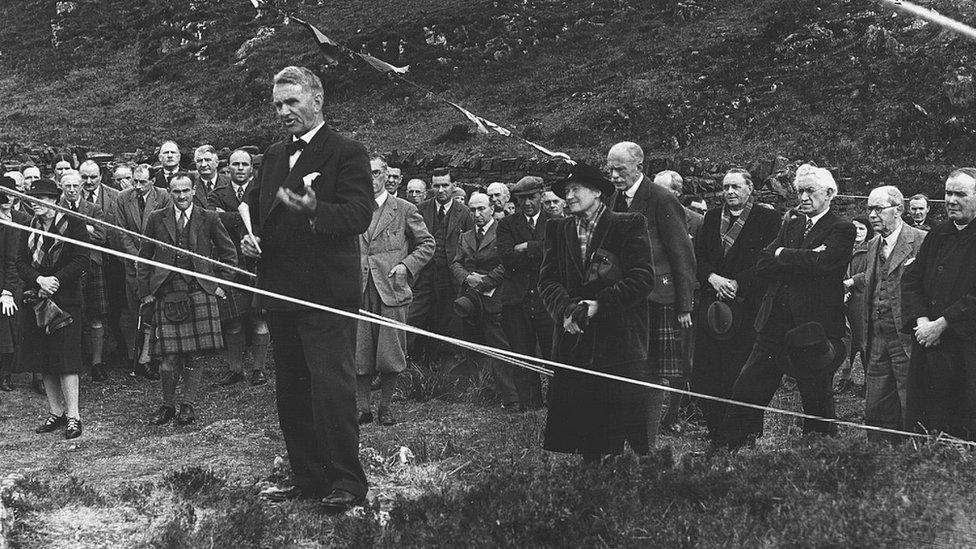
The 1943 Hydro Electric Development (Scotland) Act nationalised the development of hydro-electric power across Scotland to deliver an ambitious social vision - to deliver power and social improvement to the people of the Highlands. Tom Johnston, then Secretary of State for Scotland and later to be the chairman of the North of Scotland Hydro-Electric Board, was the driving force behind this grand plan
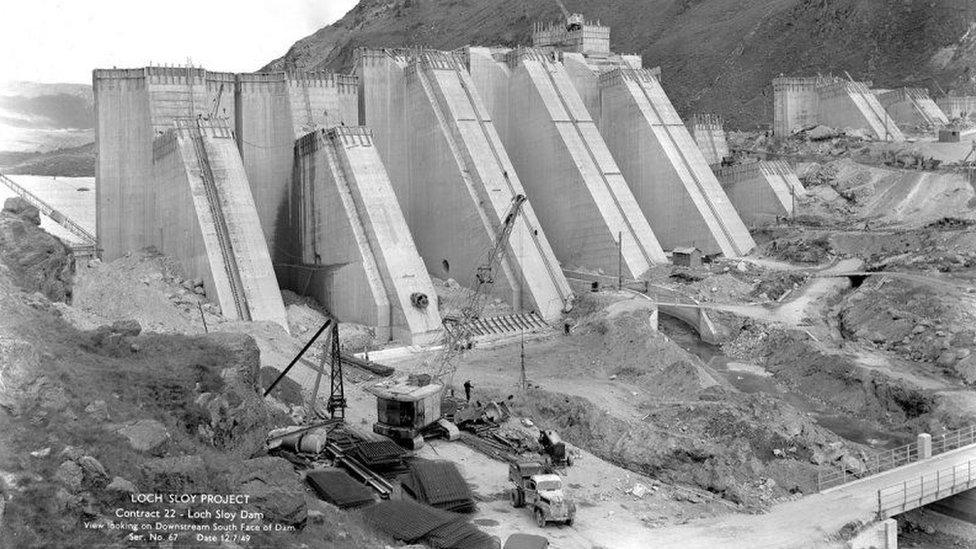
Sloy dam under construction, 1949. The Board’s first two developments at Sloy and Tummel Valley were subject to lengthy public inquiries before approval
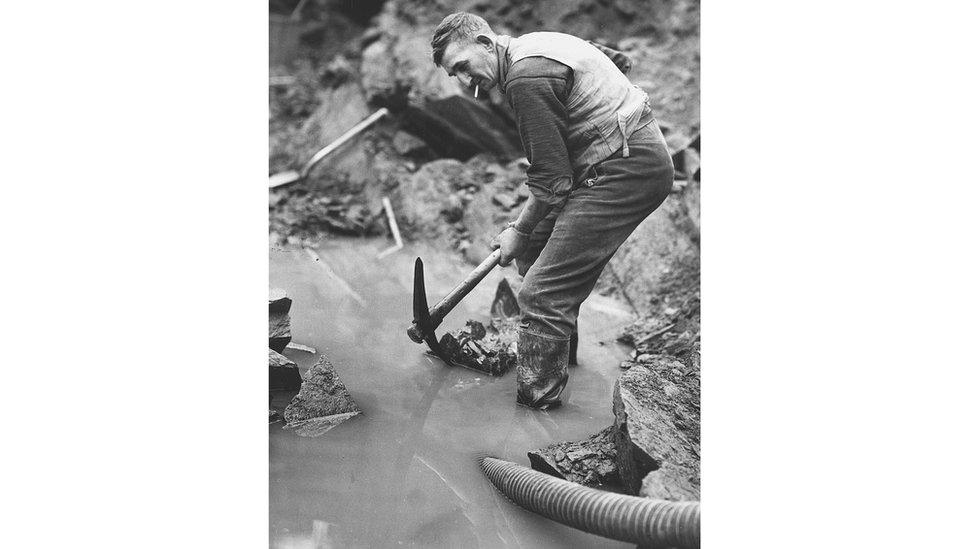
Hydro development brought employment to the north of Scotland in the post-war years. At its peak, more than 12,000 people were employed in its construction, with workers from Ireland, prisoners of war and displaced persons from Germany, Italy, Poland and Czechoslovakia, joining squads of native Highlanders, many of whom had never before been paid such high wages
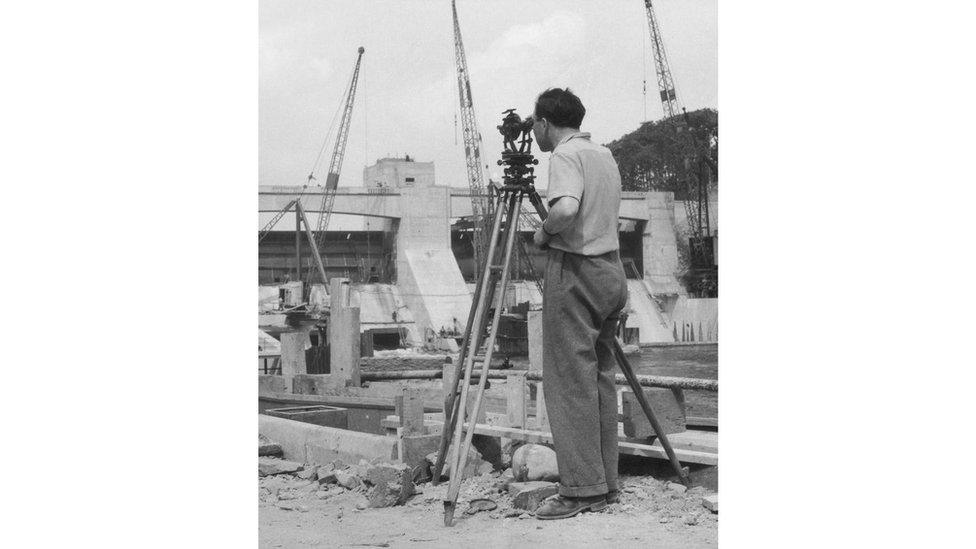
An engineer during construction of Pitlochry Power Station, part of the scheme that opponents foretold to be "the ruination of tourism in Highland Perthshire"
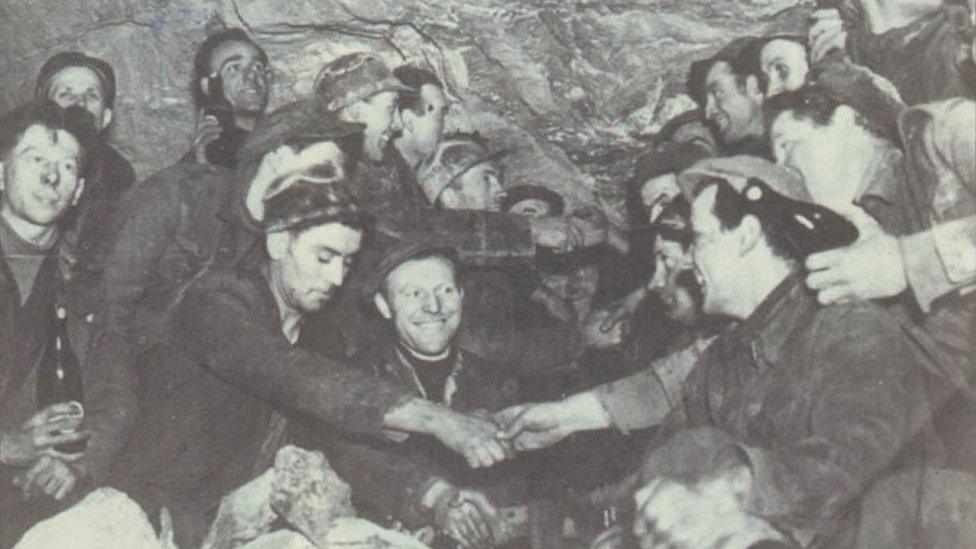
Celebration as two groups meet in Ben Vorlich during the construction of the Loch Sloy scheme, 1949. "Tunnel Tigers" were the highest paid of all the "hydro boys" with wages some 10 times that of local estate workers
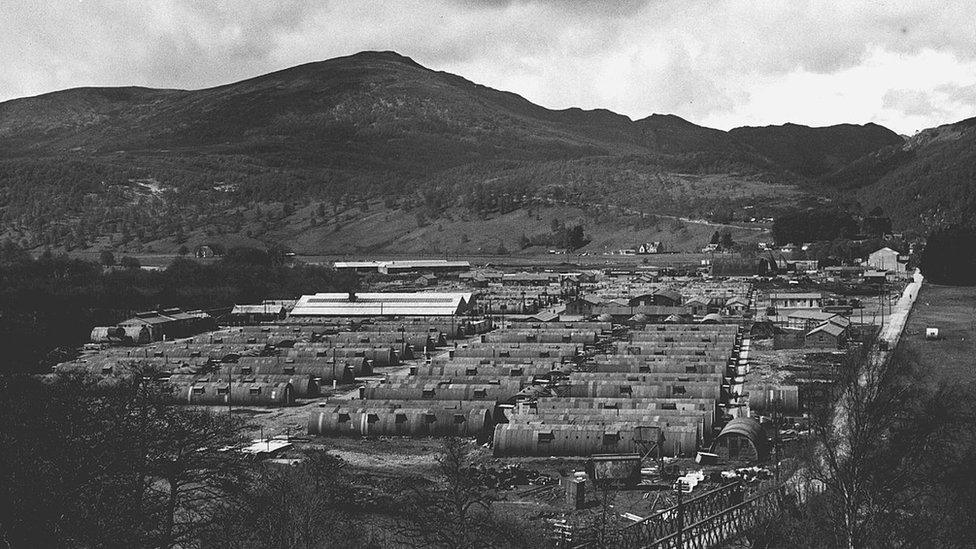
The hydro boys camp in Cannich, during construction of the Affric/Beauly scheme. Living conditions were basic with many huts transferred from former POW camps
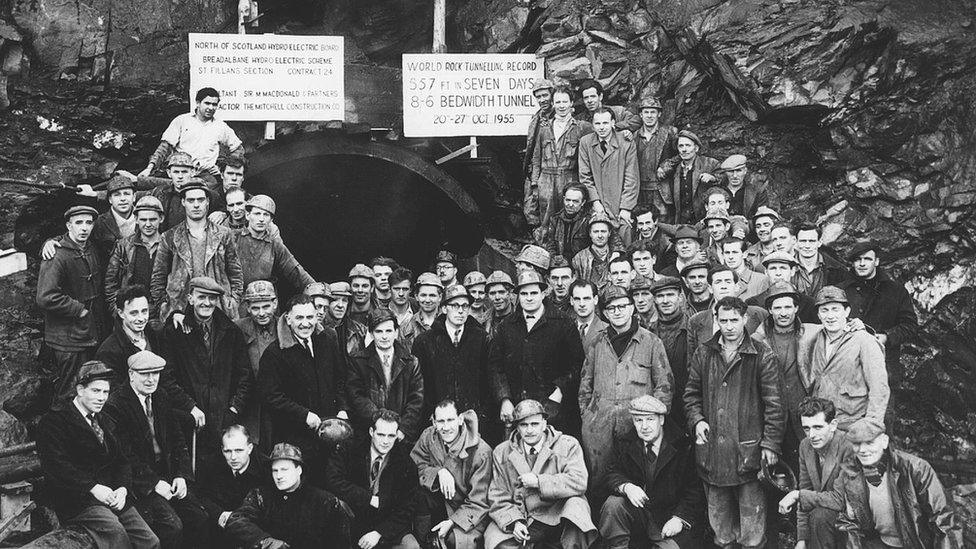
A group of workers pose outside the St Fillans tunnel in 1955, moments after they set the world rock tunnelling record – 557 feet in just seven days
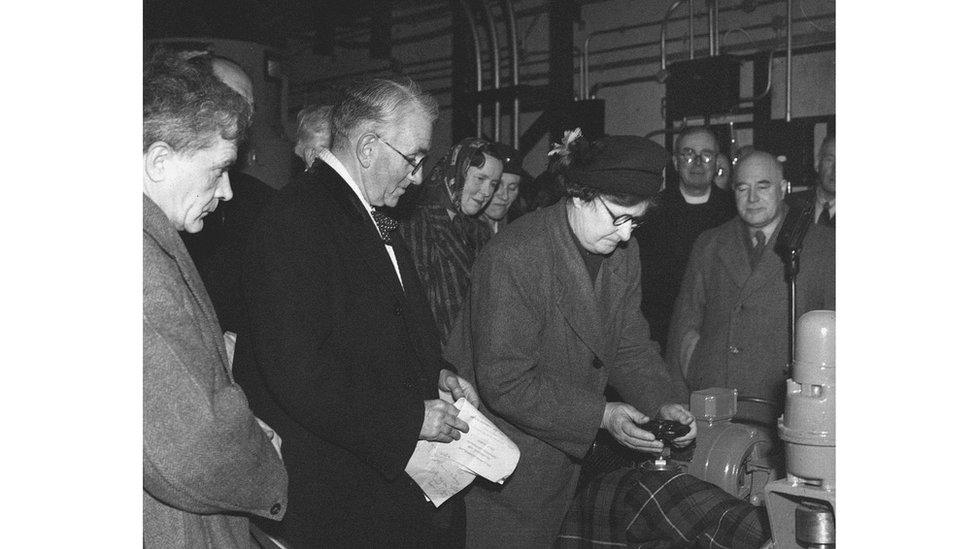
Locals were often involved in the big switch on, such as Mrs McKenzie from Brora who turned on the Lochalsh scheme under the watchful gaze of Tom Johnston
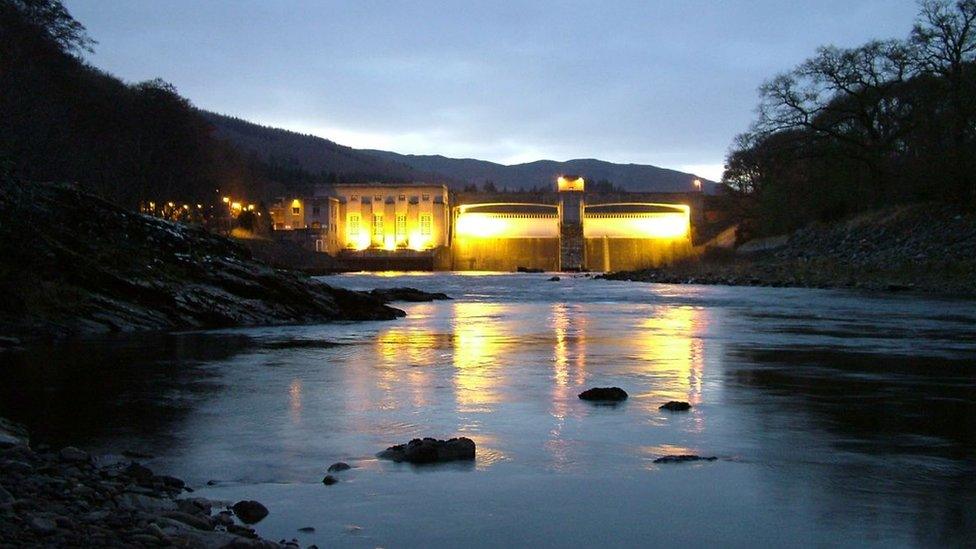
By the time major hydro development ended in the mid 1960s, Scotland could boast of 56 dams, including Pitlochry dam (pictured here), connected by over 600km of rock tunnel, aqueducts and pipelines
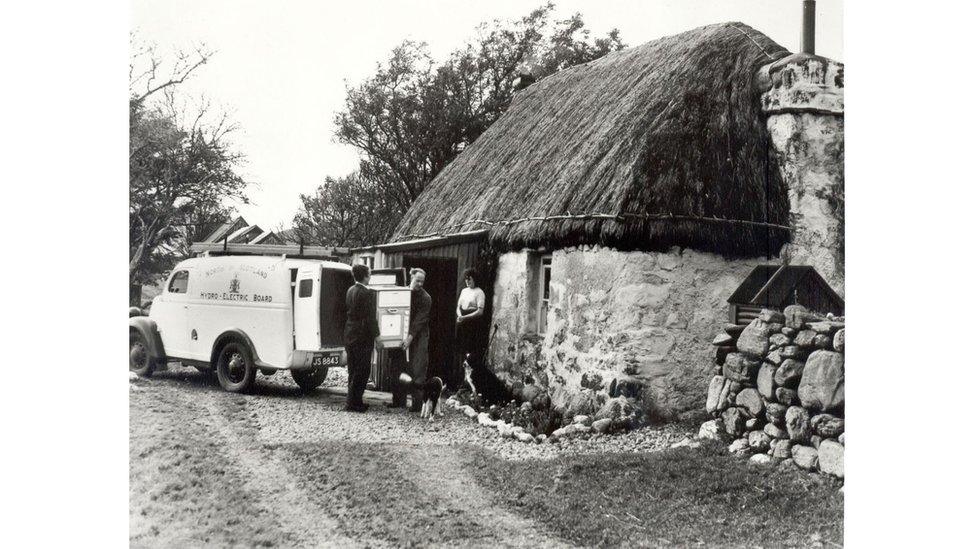
By 1964, over 90% of the North of Scotland was now "on grid", up from about 40% in 1944. For the first time, many Highlanders could take advantage of new electric appliances, such as this cooker being delivered to a remote croft
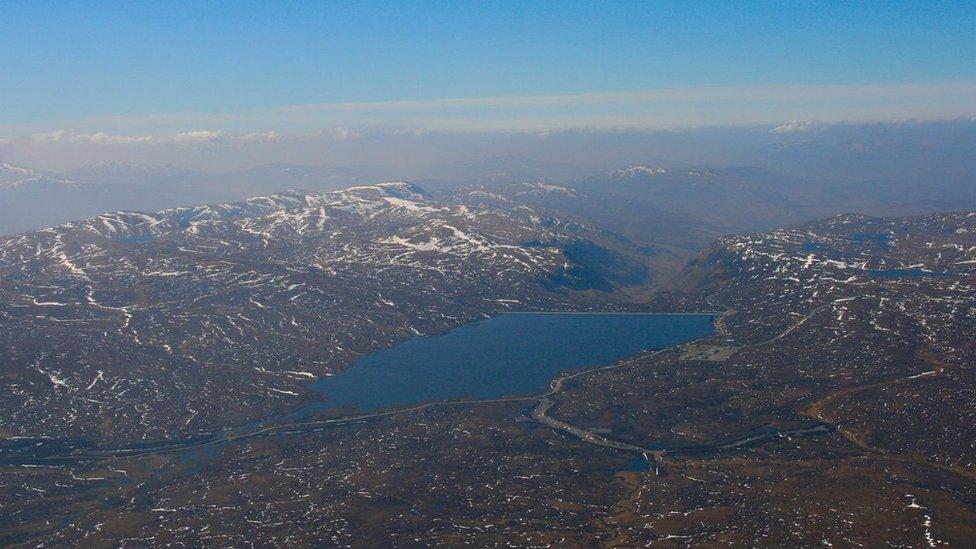
It would take more than 40 years for another large conventional hydro station to be built in Scotland. SSE, which now operates the vast majority of the schemes built during the time of the "Hydro Board", commissioned the 100MW Glendoe scheme in 2009. It is situated less than a mile from the Fort Augustus abbey where it all started
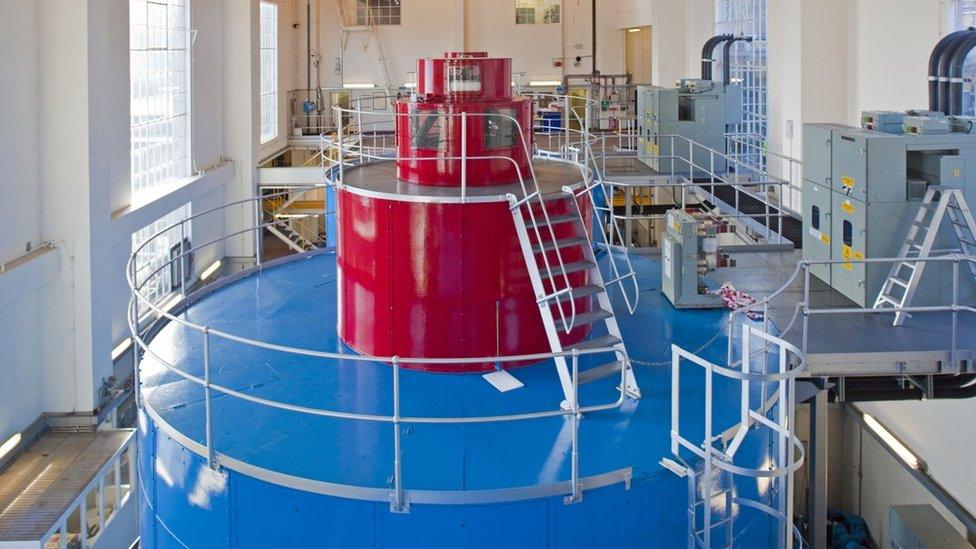
The generator hall at Sloy Power Station, which remains the largest conventional hydro electric power station in the UK
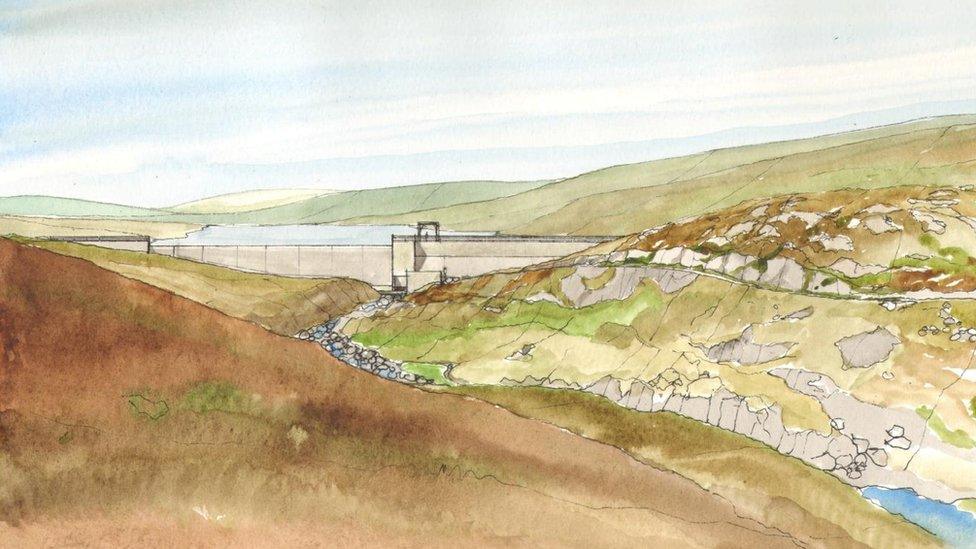
An artist's impression of SSE's 7.5MW Glasa hydro scheme in Ross-shire, which will begin construction later this summer. The company also has plans for a much larger pumped-storage hydro scheme at Coire Glas on Loch Lochy, which is currently with Scottish Ministers for approval (Pictures courtesy of SSE, Scottish Renewables and Historic Scotland)
- Published8 May 2013
- Published30 November 2012
- Published27 July 2012